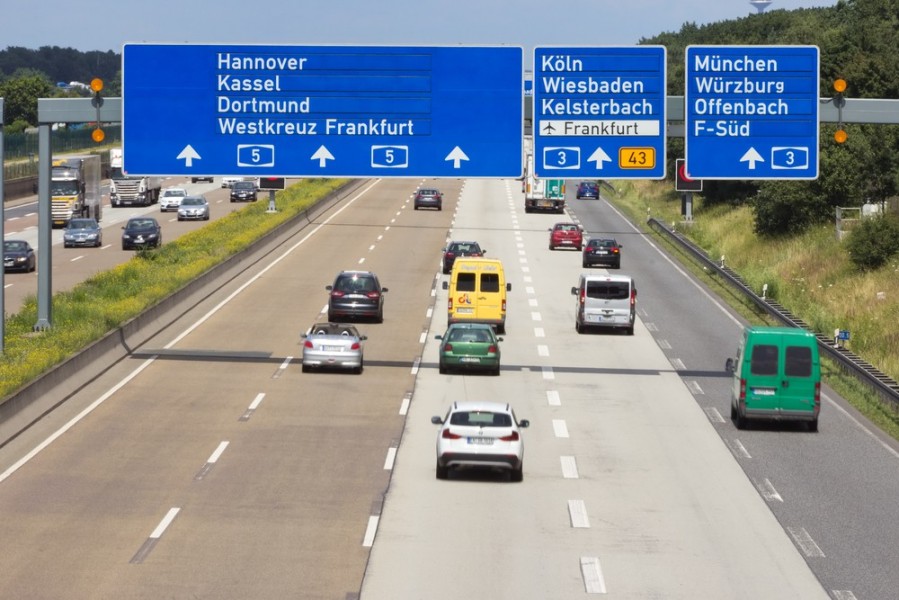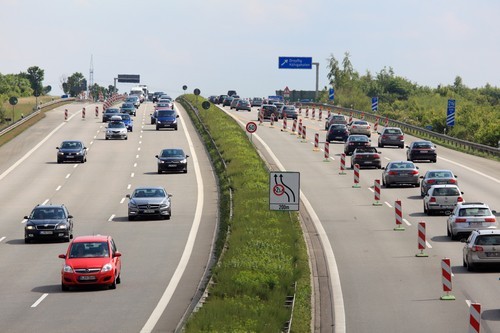Store Hours
| Sun | CLOSED |
| Mon | 8:00 am - 5:00 pm |
| Tue | 8:00 am - 5:00 pm Closed |
| Wed | 8:00 am - 5:00 pm |
| Thu | 8:00 am - 5:00 pm |
| Fri | 8:00 am - 5:00 pm |
| Sat | CLOSED |
| Sun | CLOSED |
| Mon | 8:00 am - 5:00 pm |
| Tue | 8:00 am - 5:00 pm Closed |
| Wed | 8:00 am - 5:00 pm |
| Thu | 8:00 am - 5:00 pm |
| Fri | 8:00 am - 5:00 pm |
| Sat | CLOSED |

Germany’s Autobahn — one of the world’s most famous highway systems -- is not where most of that country’s fatal crashes happen. That distinction – 60 percent of German road deaths -- occur on rural roads. Only some 12 percent of Germany’s deadly crashes happen on the Autobahn.
People drive fast here in Albuquerque, NM, but not as fast as they do on the Autobahn. All of us at Quanz Advanced Auto Care - East are fascinated with these high-speed roads with their colorful history.
With more than 7,500 miles of highway connecting various points across Germany, the Autobahn is known for its high-velocity driving and lack of speed limits in some places . It has two to four lanes in each direction, with many landscaped medians and guard rails, as well as concrete barriers in some sections. No part of it exceeds a 4 percent grade, and a freeze-resistance concrete mix is used to make the road safer in winter. There are more than 65 tunnels and many bridges on the Autobahn, spanning valleys and crossing mountains while limiting slope. Safety features in the tunnels include emergency telephone, video monitoring, periodic fire extinguishers, emergency exits and lighting, advanced ventilation systems and refuge rooms.
There are areas where speed are kept down, but, there are stretches of the world’s third largest superhighway, after the U.S. and China -- where a driver can put the pedal to the metal.
There are signs along sections of the Autobahn that recommend a speed limit of 80 mph, and segments through urban areas where cars can “crawl along” at 62 mph. But, about 65 percent of the autobahn has no speed limit.
 The Autobahn was not Hitler’s brainchild. Though he is generally credited with Germany’s first limited-access highways — built for military use – the concept was actually established before the Third Reich. The first section of the Autobahn, between Cologne and Bonn, opened in 1932, and by 1938 , nearly 2,000 miles had been added. By 1984, it had grown to some 5,000 miles of roadways.
The Autobahn was not Hitler’s brainchild. Though he is generally credited with Germany’s first limited-access highways — built for military use – the concept was actually established before the Third Reich. The first section of the Autobahn, between Cologne and Bonn, opened in 1932, and by 1938 , nearly 2,000 miles had been added. By 1984, it had grown to some 5,000 miles of roadways.
Germany reunified in 1990, and the new government started working to reconnect the nation with an efficient highway system. By incorporating these roads, the Autobahn’s size greatly increased and over the next twenty years and it was reported to have grown to about 7,500 miles of highway.
The Autobahn is not an excuse for reckless driving. In fact, It’s not easy to get a driver’s license in Germany. Driving hopefuls must take formal classes in high-speed car control, since cars behave differently over 90 mph. German drivers are well-trained, unlike American drivers, in handling no-speed-limit highways.
Another reason Germany can get by with no speed limits is that the Autobahn roadways are scrupulously maintained, as opposed to the pot-holed U.S. roads which would be lethal over 100 mph.
There are also rules of the road that everyone must obey.
For instance, the Autobahn’s left lane is for passing, only.
Debate still rages over the relative safety of the speed limitless Autobahn compared to other countries.
One English source suggests that since a 70 mph limit went into effect on roads there nearly 50 years ago, the risk of fatal crashes has dropped by two-thirds. But, other safety improvements have also been made in the intervening years. Also, the U.S. logs nearly 12 fatalities per 100,000 population annually, compared to 4.3 in Germany.
Whether or not motorists are safer at 55 mph, fuel economy definitely improves at that speed.
The Department of Energy says your car is most efficient at or below 55 mph, and grows less efficient in direct proportion to increasing speed.
No Moped, bicycles or pedestrians are allowed on the Autobahn, and only vehicles that can maintain speeds of at least 36 mph can enter. There are no tolls, though commercial trucks pay a fee. There’s no stopping or U-Turns allowed.
And, even on the autobahn, construction zones can reduce speeds to as low as 40 miles per hour.
Sources: Wikipedia, MotorTrend and Car Craft
Social